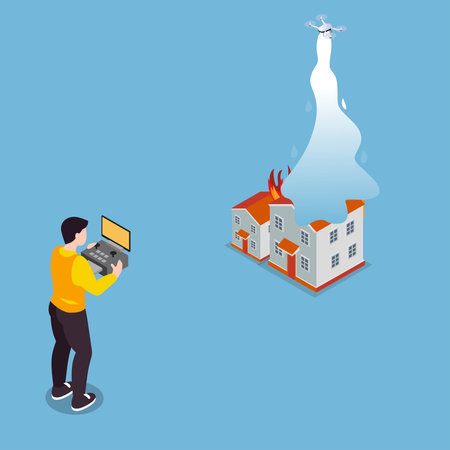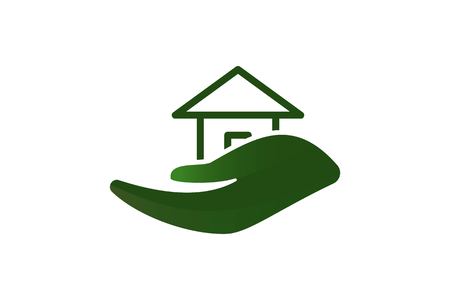Understanding the Impact of Natural Disasters on Property
When it comes to natural disasters, their effects on homeowners and renters in the United States can be dramatically different depending on where you live. From hurricanes battering the Gulf Coast, wildfires sweeping through California, floods submerging parts of the Midwest, to tornadoes tearing through the Great Plains, each region faces its own set of challenges. For homeowners, these events often mean extensive property damage or even total loss, leading to financial strain and emotional distress. Renters, while not responsible for structural repairs, may still face personal property loss and temporary displacement. The diversity of natural disasters across the U.S. means that both homeowners and renters need to understand the unique risks in their area—whether its preparing for hurricane season in Florida or wildfire threats in Colorado. Recognizing these regional differences is the first step in making informed decisions about insurance coverage and emergency preparedness.
Homeowners Insurance: What’s Covered and What’s Not
When it comes to protecting your home from natural disasters, understanding your homeowners insurance is essential. Most Americans assume their standard policy has them covered for any catastrophe, but that’s not always the case. Let’s break down what typical homeowners insurance includes, where the gaps are, and how coverage can differ depending on where you live.
What Standard Homeowners Insurance Usually Covers
Most basic homeowners insurance policies (like HO-3 policies, which are the most common in the U.S.) provide protection against a range of perils. Here’s a quick look:
| Covered Peril | Usually Included? |
|---|---|
| Fire & Smoke | Yes |
| Theft & Vandalism | Yes |
| Windstorm & Hail | Yes (except some coastal areas) |
| Lightning | Yes |
| Explosion | Yes |
| Weight of Ice/Snow | Yes (may vary by region) |
| Falling Objects | Yes |
The Big Exclusions: Where Coverage Falls Short
This is where many homeowners get caught off guard. Standard policies almost always exclude certain natural disasters:
| Excluded Disaster | Need Separate Policy? |
|---|---|
| Flooding (from outside sources) | Yes – Flood insurance needed (usually via FEMA/NFIP or private market) |
| Earthquakes & Land Movement | Yes – Earthquake endorsement or separate earthquake policy required (especially in California, Pacific Northwest, and other seismic zones) |
| Sewer Backup | Usually excluded; endorsement available in many states for extra premium |
Regional Variations: Why Location Matters
Your address plays a huge role in what your policy will cover—and what it won’t. For example:
- Gulf Coast & Atlantic States: Windstorm/hurricane deductibles are often higher or require separate windstorm insurance.
- California: Earthquake insurance is a separate policy; wildfires may be covered, but rates are rising and some insurers are leaving high-risk areas.
- Tornado Alley: Wind damage is typically included, but high claims can drive up premiums.
The Bottom Line for Homeowners
No matter where you live, it’s crucial to review your policy details and ask your insurer about disaster exclusions. If you’re in a high-risk area, seriously consider additional policies or endorsements to fill those coverage gaps—otherwise, you could be left footing a massive bill after a disaster strikes.

3. Renters Insurance: Your Personal Property and Liability
Renters insurance is often overlooked, but it plays a crucial role in protecting tenants from financial losses caused by natural disasters. While renters don’t own the building they live in, they are still at risk of losing their personal belongings or being held liable for damages or injuries within their rental unit. Understanding the basics of renters insurance—and its limitations—can help you prepare for the unexpected.
What Does Renters Insurance Cover?
At its core, renters insurance covers your personal property against perils such as fire, smoke damage, theft, and certain types of water damage. In disaster scenarios like tornadoes or wildfires, renters insurance can reimburse you for clothing, electronics, furniture, and other belongings that are destroyed or stolen. Most policies also include liability protection, which helps cover legal expenses if someone is injured in your rental home or if you accidentally cause damage to someone else’s property.
Protections in Disaster Scenarios
If your rental becomes uninhabitable due to a covered event (like a hurricane or severe storm), many renters policies provide “loss of use” coverage. This helps pay for additional living expenses—such as hotel stays or temporary rentals—while your home is being repaired. It’s a practical lifeline that many renters don’t realize exists until they need it most.
Insurance Gaps Renters Should Know
However, it’s important to know what renters insurance doesn’t cover. Most standard policies exclude flood and earthquake damage. That means if you live in an area prone to these disasters—like parts of California or the Gulf Coast—you’ll need to purchase separate flood or earthquake insurance for full protection. Additionally, renters insurance won’t cover damage to the building itself; that responsibility falls on your landlord’s insurance policy.
In summary, while renters insurance offers valuable protection for your belongings and liability in many disaster situations, significant gaps remain. Review your policy carefully and consider supplemental coverage if you live in a high-risk area to make sure you’re fully prepared.
4. Major Insurance Gaps and Overlooked Risks
When it comes to natural disasters, many homeowners and renters assume their insurance policies have them covered. Unfortunately, significant coverage gaps often leave people vulnerable when disaster strikes. Understanding where these gaps exist can help you make smarter decisions about your protection.
Common Misconceptions: What’s Really Covered?
Standard homeowners and renters insurance policies generally cover damage from fire, theft, and some types of water damage (like a burst pipe). However, they typically do not cover many natural disasters that are increasingly common across the U.S., such as floods or earthquakes. This leads to a false sense of security for both property owners and renters.
Comparison Table: Standard Policy Coverage vs. Actual Disaster Risks
| Disaster Type | Homeowners Insurance Coverage | Renters Insurance Coverage | Special Policy Needed? |
|---|---|---|---|
| Flood | No | No | Yes (Flood Insurance) |
| Earthquake | No (except CA with endorsement) | No | Yes (Earthquake Endorsement) |
| Tornado | Usually Yes | Usually Yes | No (unless excluded in high-risk areas) |
| Wildfire | Usually Yes | Usually Yes | No (but may face higher premiums or exclusions in fire-prone zones) |
| Landslide/Mudslide | No | No | Yes (Rare; specialty policies) |
| Sewer Backup | No (unless added endorsement) | No (unless added endorsement) | Yes (Sewer Backup Rider) |
Hidden Vulnerabilities for Homeowners and Renters Alike
Homeowners: Many assume that because they have a mortgage-required policy, they’re fully protected. In reality, lenders only require coverage for the structure itself, not necessarily the contents or loss of use. If your area is prone to flooding or earthquakes, you’ll need separate policies—and many people skip these due to cost or lack of awareness.
Renters: Even fewer renters carry any insurance at all. And those who do often don’t realize their policy won’t pay for flood or earthquake damage to their personal belongings. Also, temporary living expenses after a disaster may not be covered unless specified in the policy.
The Costly Consequences of Underinsurance
If you find out too late that your policy excludes certain disasters, you could be left paying out-of-pocket for repairs, replacements, or even temporary housing. Here are some real-world scenarios Americans face every year:
- A Houston family loses everything in a flood—standard homeowners insurance denies the claim.
- An LA renter’s apartment is damaged by an earthquake—the landlord’s policy doesn’t cover tenant belongings.
- A Colorado homeowner faces thousands in losses after a wildfire; their policy has special exclusions for “high risk” zones.
Key Takeaway: Don’t Assume—Ask Your Agent!
The fine print matters. Always review your policy details and ask your insurance agent specifically about natural disaster coverage for your location. Consider endorsements or separate policies if you live in areas susceptible to floods, earthquakes, or other excluded hazards. Awareness is your best defense against costly surprises when disaster hits.
5. Specialized and Supplemental Insurance Options
While standard homeowners and renters insurance policies provide essential coverage, they often fall short when it comes to protecting against the specific risks posed by natural disasters. That’s where specialized and supplemental insurance options come into play, offering solutions tailored to fill these common gaps.
Flood Insurance: Filling a Major Coverage Gap
Most traditional homeowners and renters policies do not cover flood damage—a significant concern for many Americans living in flood-prone regions. The National Flood Insurance Program (NFIP), managed by FEMA, is the primary provider of flood insurance in the U.S. This policy can be purchased separately and is often required in high-risk areas by mortgage lenders. For renters, a separate contents-only policy can help protect personal belongings from flood loss.
Earthquake Policies: Protecting Against the Unexpected
Earthquakes are another major risk that standard policies typically exclude. In states like California, residents are encouraged or even required to buy supplemental earthquake insurance, which covers structural damage and sometimes personal property loss after a quake. These policies usually come with higher deductibles but can be a financial lifesaver after an event.
Renters’ Riders and Endorsements
For renters, adding riders (also called endorsements) to their existing policy can offer extra protection for specific valuables or perils not covered by basic plans. For instance, a rider might cover expensive electronics or jewelry, or add protection for water backup or identity theft—risks that can be exacerbated during disasters.
Choosing the Right Mix of Coverage
No single policy covers every type of natural disaster or every personal need. Homeowners and renters should assess local risks and consult with insurance professionals to determine which supplemental options make sense for them. By combining standard policies with specialized coverage, individuals can build a more comprehensive safety net—and avoid costly surprises if disaster strikes.
6. Practical Tips for Evaluating and Improving Your Coverage
Review Your Current Policy Thoroughly
Start by reading your insurance policy from top to bottom—whether you’re a homeowner or a renter. Pay special attention to what types of natural disasters are covered (like fire, windstorm, or hail), and which ones are excluded (such as flood or earthquake). If you’re unsure about certain terms or coverage limits, don’t hesitate to call your insurance agent for clarification. Knowing exactly what is and isn’t protected can save you from unpleasant surprises after a disaster.
Assess Your Risk Based on Location
Your risk for certain natural disasters depends heavily on where you live. Homeowners and renters in coastal areas should consider hurricane and flood risks, while those near fault lines need to think about earthquakes. Use local resources, like FEMA’s Flood Map Service Center or your city’s emergency management office, to understand your area’s most likely threats. This information will help guide your insurance decisions.
Fill the Gaps with Additional Coverage
Standard homeowners and renters insurance policies often don’t cover events like floods or earthquakes. Consider purchasing separate policies—such as flood insurance through the National Flood Insurance Program (NFIP) or private earthquake insurance—to fill these gaps. Don’t forget to check if valuable personal property (like electronics or jewelry) needs extra protection, especially for renters who may underestimate the value of their belongings.
Document Your Belongings
Create a detailed home inventory: take photos or videos of each room and keep receipts for major items. Store digital copies online or in a safe place outside your home. This documentation will be invaluable if you ever need to file an insurance claim after a natural disaster.
Understand Deductibles and Limits
Deductibles—the amount you pay out of pocket before insurance kicks in—can vary by disaster type. For example, hurricane deductibles are often calculated as a percentage of your home’s value rather than a flat dollar amount. Make sure you know how much you’d have to pay if disaster strikes and adjust your coverage if needed so it fits within your budget.
Stay Updated and Revisit Regularly
Your living situation, possessions, and even local risks can change over time. Review your policy at least once a year and update it after major life events—like moving, renovations, or purchasing expensive items. Staying proactive ensures you won’t be caught off guard when nature throws its worst your way.


